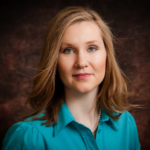On his office wall, Phil Kilgore has pasted “100 different stickies” to a United States map. Each marks where a group of people want to open a “classical” charter school.
In directing Hillsdale College’s charter school initiative, Kilgore said he has discovered a rising wave of ordinary citizens who hope to serve their country and neighbors by opening public schools committed to a lost tradition of rigorous cultural literacy and virtue.
“The fact that [public education] has gone off the rails over the past 75 years doesn’t mean it needs to be abandoned. It needs to be redeemed,” Kilgore said.
Charter schools are independent public schools, legal in 41 states. They must enroll all comers, charge tuition to the state rather than parents, and meet state and federal academic standards. Lawmakers envision them as “laboratories for reform,” hoping their flexibility and mission orientation would give families tailored alternatives to traditional schools and give traditional schools incentives for improvement.
“Based on our research, we would describe the growth of classical education as bordering on explosive,” said David Kern, creative director of the CiRCE Institute, a classical research and support network. “It seems to be having an impact beyond schools that self-identify as classical.”
Kern identifies growing interest among religious and international communities, homeschoolers, and charter networks, noting publications and support materials have been “selling like hotcakes” in the past decade.
Abandoned Wealth
In explaining classical education, Terrence Moore, an assistant professor of history at Hillsdale and former principal of a top-ranked U.S. public high school, says he likes to tell people, “This is the kind of education your grandparents received.”
Classical education gives youngsters knowledge opinion polls overwhelmingly reveal the U.S. public wants taught in schools: basic grammar and writing, U.S. and world history, rigorous math and science, and classic literature. It was prevalent until progressives demonized it as “rote learning” beginning in the early 20th century, Moore says, and now most public schools do not offer content-oriented curriculum.
Instead, as University of Virginia education professor E. D. Hirsch began pointing out in the 1980s, public schools now largely abandon traditional teaching and curricula for “critical thinking skills” of little substance. Synthesizing years of psychological and pedagogical research, Hirsch demonstrated abandoning content for methods deprives children of the ability to think and communicate. One cannot build a tower with no material, he noted.
This deprivation falls hardest on poor and minority children because their families can rarely make up these deficits at home.
“If you’re only helping private and home schools, then you are only offering this wonderful thing to a narrow segment of students and abandoning 89 percent [who attend public schools],” Kilgore said. “That’s unconscionable.”
He said the republic cannot endure if its people cannot mentally and morally govern themselves, which classical education encourages.
Overcoming the Money Barrier
In many states, any group that can get its charter approved by the state or state-appointed authority can start a school. This means ordinary folks, with hard work and a robust vision, can tap the finances to start a school.
For many such interested individuals, the moral and civic opportunities far outweigh opportunities to make money.
“People think [a private school] is for a different kind of class of people,” said Tara Elkins, one of a team opening Estancia Valley Classical Academy in Moriarty, New Mexico on August 27. “We really believe this kind of education is necessary for everyone to help preserve liberty and a good life.”
Estancia Valley is one of three schools Hillsdale selected to give startup funds, training, and staff support from a Barney Family Foundation grant. Its nine founders met largely through church, only gradually shifting from their initial vision for a private, Christian school to a public, nonsectarian classical charter.
Lifting the Poor
A charter school conference Hillsdale held this summer attracted 70 people from 22 states. Attendees repeatedly expressed desires to lift up children who have otherwise terrible prospects.
Harmony Longenecker, a teacher and Florida mother of four who attended the conference, said she and her husband, a teacher, empathize with the “have-nots” they aim to serve.
“We have no money because we’re in education, so we can’t send our kids to private school,” she said, just like struggling single mothers or poor families.
Like any significant endeavor, starting a charter school is backbreaking. The three schools in Hillsdale’s first startup class, like the average high-quality charter school, have all taken two to three years of concerted effort among committed adults to open, which for the Texas and New Mexico schools happens this fall and for the Georgia school in fall 2013.
Estancia Valley’s team, all of whom had families or day jobs, “made dramatic sacrifices,” Elkins said. They often met several times a week in a home they began calling “the watering hole” to read, complete state paperwork, write, pore over potential textbooks, raise money, and more, Elkins said.
The state approved their 400-page application September 16, 2011. When the doors open in a month, Elkins will teach upper history.
“I’m thinking about ‘How much can these kids read? How much should I make them read?” Elkins said. “We’re all nervous and excited. [Many of our students] live in utter poverty, and the system impoverishes them.”
This article is the first in a series about civic-minded education entrepreneurs.
Image by Santa Catalina School.





